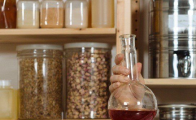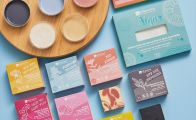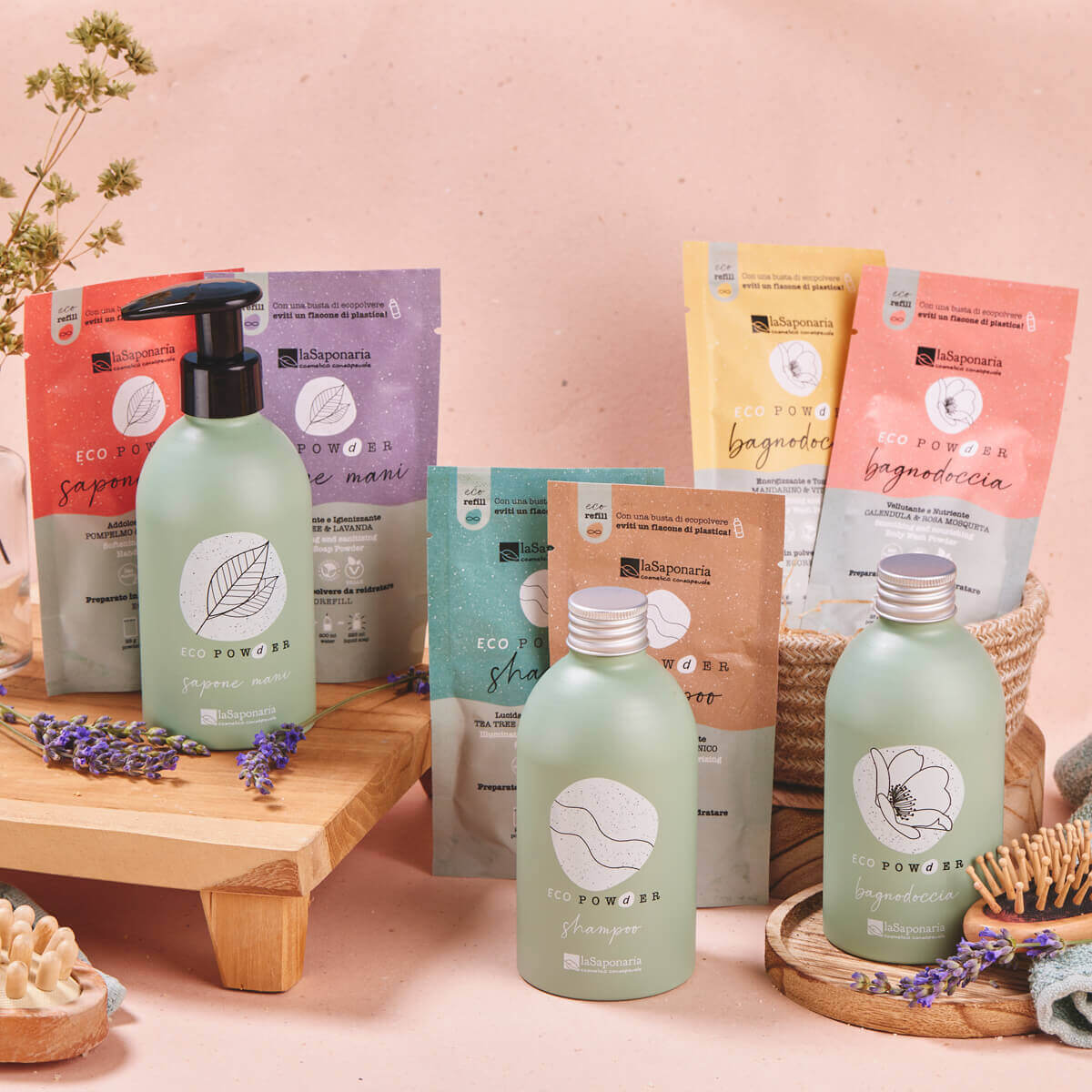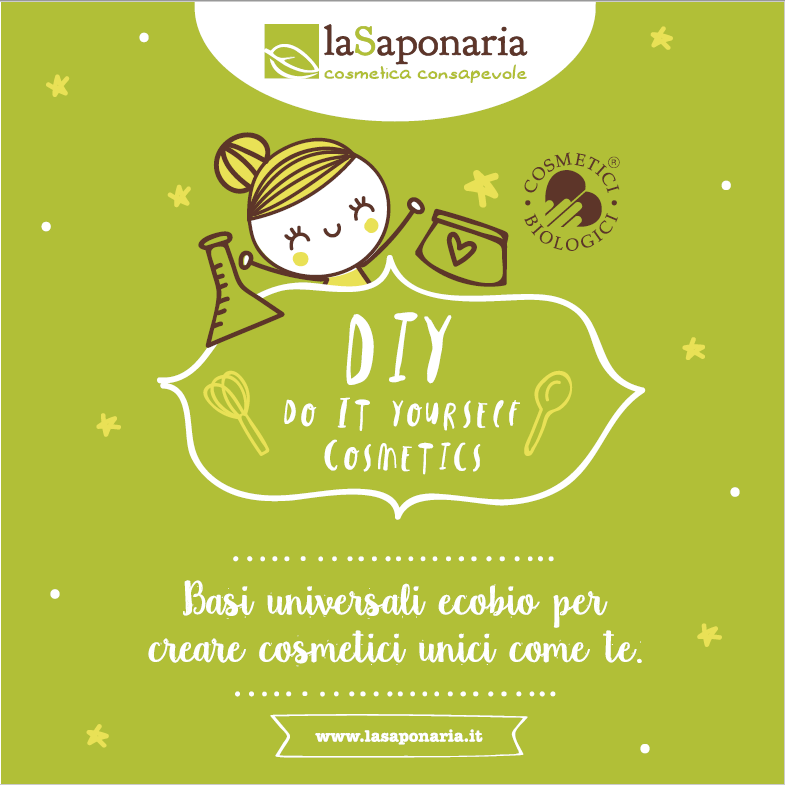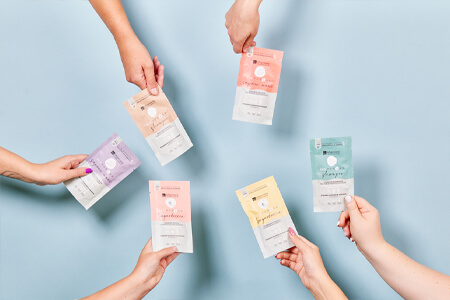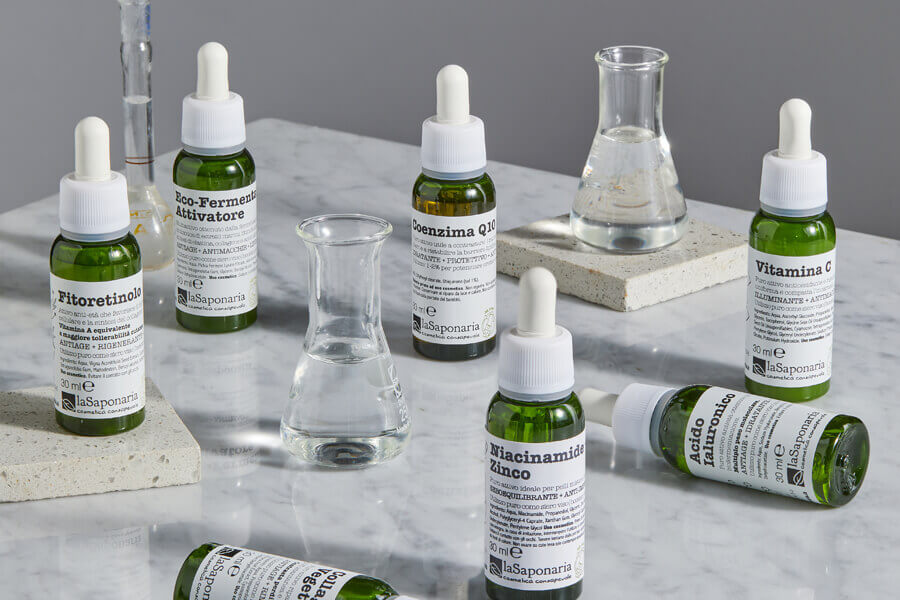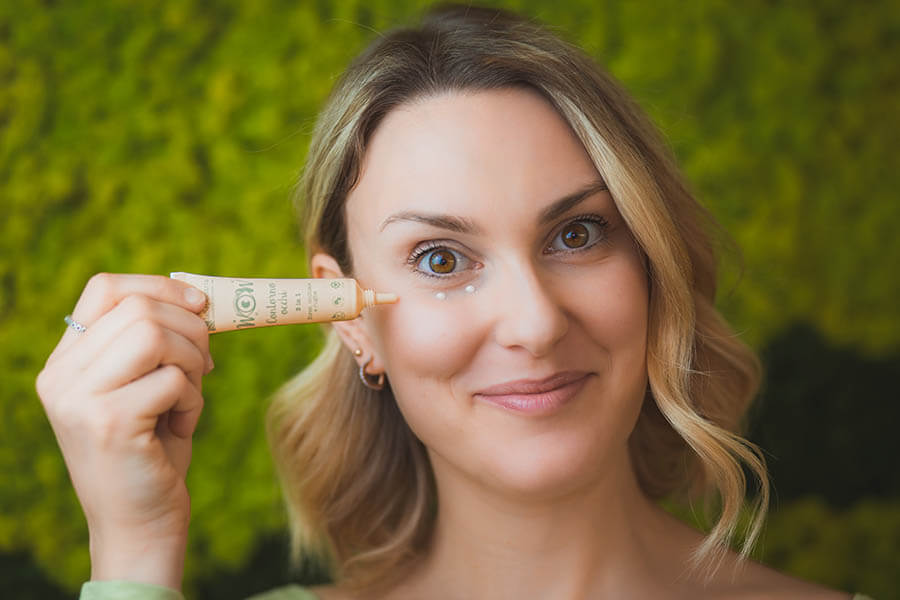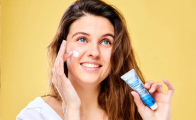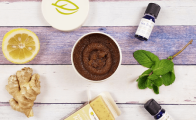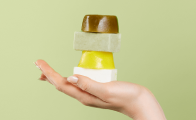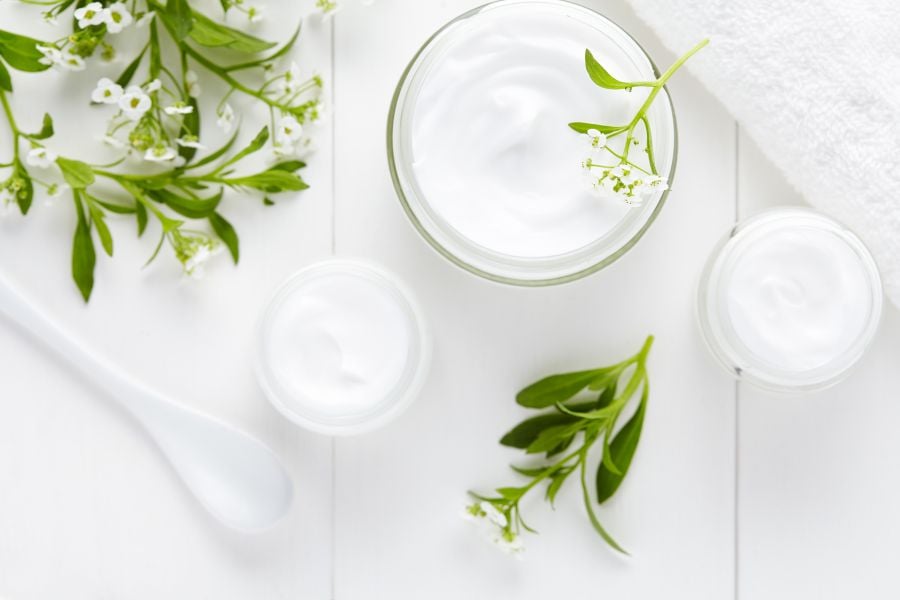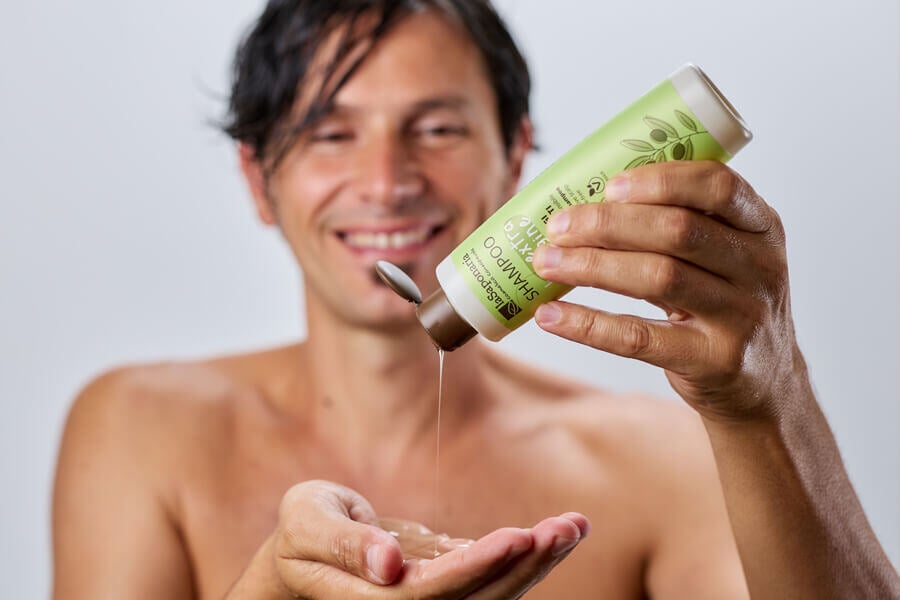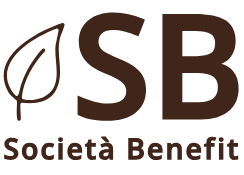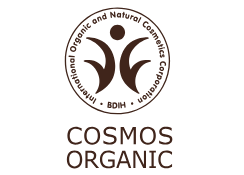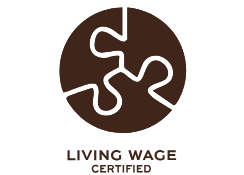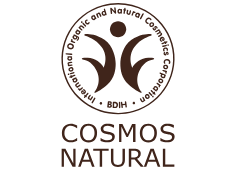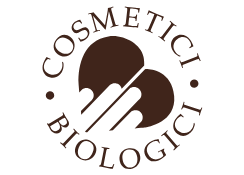The insights of La Saponaria
Probiotics and prebiotics: what they are and the difference between them
Prebiotics and probiotics: they are often confused but the difference between them is substantial. What they certainly have in common, however, is that they are able to bring benefits to our general state of health. Let's see how and why.
Probiotics are live organisms that benefit our body and that we can take through food or supplements. Prebiotics are organic substances, such as fibres, that stimulate the growth of the good bacteria that make up the microbiota.
Rewind: what is the microbiota?
Our body is a veritable ecosystem inhabited by trillions of bacteria, viruses and fungi. Together, these microorganisms, which live with us in symbiosis throughout life and which consist of 10-100 billion microbial cells, together with their genetic make-up, make up the human microbiota.
It is now scientifically proven that the microbiota greatly influences our overall health, by intervening in the protection from inflammatory, metabolic and allergic diseases, and alterations to it are often the cause of such diseases.

The gut microbiota, the richest and most important in our body, produces mucus and stimulates the inflammatory response and immune defences. Recent studies have shown that the skin microbiota also plays a very important role: it is as complex as the gut microbiota, and it lies between the environment, the skin cells and those of the immune system, stimulating the inflammatory response.
We can act on our microbiota in various ways: through diet, pH regulators, regulating our circadian rhythm and through the use of prebiotics and probiotics.
Prebiotics are able to support the energy metabolism of the bacteria that make up our microflora, optimise the host environment, and improve the physiological balance in general.
These plant-derived ingredients, when added to hair-specific formulations, are a great source of nourishment, improving the health and appearance of the scalp and hair.
Restoring balance to the microbiota also:
• regulates sebum production
• improves and prevents itching and dandruff
• improves fine, brittle hair prone to hair loss
• strengthens the skin's barrier effect
• boosts the health and beauty of the hair
Probiotics: what they are and what they are used for
The term 'probiotic' comes from the Greek pro-bios meaning pro-life, in favour of life. The WHO defines them as 'live organisms that, when administered in adequate quantities, benefit the health of the host'
A micro-organism can be said to be probiotic if it meets the following requirements:
• safe for use in humans: probiotic microorganisms must not carry acquired and/or transmissible antibiotic resistance;
• active and viable in the intestine, in a quantity sufficient to justify any beneficial effects observed in efficacy studies;
• able to persist and multiply in the human intestine;
• able to confer a proven physiological benefit.
Intestinal colonisation by probiotics is temporary, and ends a few days after discontinuation of their intake.
Probiotics should always be taken as indicated by a medical professional, and, in any case, it is always important to know the full name of the strain, because their principle of action is different for each family of microorganisms. It is also important to know the amount of live probiotics contained in the product and the appropriate storage conditions, and all this information is usually stated on the packaging of food or food supplements.

When and why to take probiotics
The intake of probiotics is useful in adults, especially for restoring intestinal balance compromised by antibiotics, stress and dietary changes, and in children, to cope with gastrointestinal infections that may jeopardise good bowel function, or for certain skin conditions, such as atopic dermatitis.
To be effective, probiotics should only ever be taken on an empty stomach, for an average of 3-4 weeks and in an amount of at least one billion bacteria per day, which is why it is impossible to introduce them through diet alone.
This is why probiotics are specifically added to food. They should not be confused with the milk enzymes or bacteria that are contained in yoghurt, which are also live but not viable, i.e. they do not have the ability to reproduce in the gut. The functions they perform are just as important for the body, but they are different from those of probiotics.
Prebiotics: what they are and what they are used for
Prebiotics provide nourishment for probiotic bacteria. These soluble dietary fibres and non-digestible carbohydrates foster the proliferation and growth of probiotics.
In food, prebiotics pass through the stomach intact and remain at the peak of their effectiveness once they reach the gut. The best-known prebiotics include fructooligosaccharides, inulins and lactosucrose.
They are present in many lactic acid supplements, and also in various foods, especially in wheat flour, bananas, honey, wheat germ, garlic, onions, beans and leeks. The intake of prebiotics through food is an important factor, especially as part of a healthy, varied and balanced diet.
The use of prebiotics in cosmetics
Prebiotics can also come to our aid when it comes to the skin microbiota and its health. Prebiotics are able to strengthen the skin's natural microbiota and its good bacteria, restoring balance to the scalp and playing a crucial role in regulating sebum, because imbalances can lead to itching and dandruff. They also help to moisturise, strengthen and to repair skin and hair.
This is why the new frontier in cosmetics is the use of prebiotics. Using the right formulation techniques, they can be incorporated into emulsions or creams, and into shampoos and scalp lotions, to nourish the good bacteria in each individual person, greatly benefiting immunity and healthy skin.
The use of prebiotics in the world of cosmetics is a new milestone in caring for our skin microbiota and safeguarding the health, beauty and youthfulness of skin and hair.
Some prebiotics we have studied and incorporated into our formulas include chicory prebiotic and the ginger, grape and incense multi-prebiotic
The difference between probiotics and prebiotics
The difference between probiotics and prebiotics is now clear: the former are good, live bacteria that settle in our bodies and live both inside us, in our digestive system, and outside us, in what is called the skin microbiota.
Prebiotics, on the other hand, are the nourishment of probiotics: fibres and carbohydrates that provide a fertile environment for probiotics to live and spread, keeping our microbiota healthy.
History and points of interest
Probiotics were discovered in the early 1900s. It was the Nobel Prize winner Eli Metchnikoff who made the first observations on the positive effects of probiotics on human health. Since then, knowledge about probiotics has been enriched by a growing number of scientific and clinical studies, and they are still being studied to see if it is possible to extend their range of action in the treatment of other diseases.
Prebiotics were first identified and named in 1993 by Marcel Roberfroid. While more recent, their discovery is no less promising than that of probiotics.
Seven rules to increase good bacteria and defend the skin
Our skin microbiota must be protected and nourished with the right products and care. Here are six rules to keep in mind:
1. Beware of high-foam cleansing products containing aggressive ingredients and products with alcohol ,which deprive the skin of its natural oils, drying out the barrier and making it susceptible to irritation.
2. No to thermal shock: sudden changes can damage the skin structure, causing widespread redness and irritation
3. Always protect your skin from the sun: UV rays cause an increase in body temperature and inflammation. (In our blog, you’ll find an in-depth look at the importance of sun creams and how to choose the most suitable one for your skin type)
4. Be careful what you eat: food can be a source of inflammation and make the skin more sensitive. It’s wise to make sure your diet always includes foods with omega 3: linseed and walnuts are rich in omega 3 and help fight inflammation and keep the skin barrier healthy
5. Go easy on alcohol: it causes localised vasodilation on the skin
6. Using cosmetics containing prebiotics is a great way to safeguard the health of your skin microbiota. (Discover our Inner Prebiotic Range for healthy and shiny skin and hair)

Written by Simona
She is La Saponaria’s digital writer: always juggling a newsletter to send and a blog article to publish, she lovingly takes care of our social media channels and our e-commerce.



